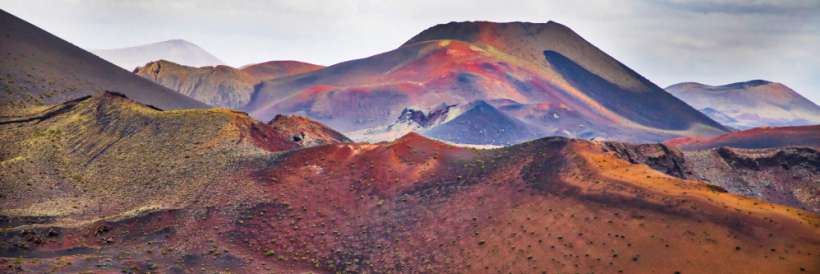Greek mythology never ceases to fascinate and Greece itself is filled with spots that are closely related to the stories of the gods. Read on to find out more about some of these locations and how you can see them up close.
Mount Olympus — The Dwelling Place of the Gods
Mount Olympus is an UNESCO World Heritage site located on the border of Thessaly and Macedonia. This magnificent mountain is the largest in Greece, and has some pretty serious links to Greek mythology. It is said that the 12 Olympian gods each owned a palace on Mount Olympus, giving the mountain its nickname of the ‘dwelling place of the gods’. The palaces were made from marble and gold and created a sort of godly neighbourhood, at the heart of which was Zeus’ throne. Interpretations of the area show a huge staircase leading up the mountain to a kingdom above the clouds. In films such as Hercules, you can see the Titans climb up Mount Olympus to provoke war against the gods, however in the original myth, the Olympian gods fought from Mount Olympus and the Titans fought from Mount Othrys.
The town of Litochoro, located in the region of Pieria, is particularly popular amongst tourists looking to stay near this magnificent mountain. Alternatively, Elatochori is a ski village located in the centre of Macedonia that is very popular amongst tourists who wish to partake in snowsports during their getaway.

Ithaca — Odysseus’ Home
Odysseus was the king of Ithaca, best known for his intelligence and bravery. He fought in the Trojan war for its ten-year duration, and was away from Ithaca for 20 years in total. His journey home after the war was famously depicted by Homer in his epic poem The Odyssey.
Odysseus was said to have a palace in the south of Ithaca, which is now a beautiful island featuring a range of stunning beaches and traditional villages.
Largely unspoilt by tourism, Ithaca is packed with natural beauty. Vathi is the island’s most popular destination, and here you’ll find a large golden sand beach, a range of hotels, and a lively town centre.

Kythira Island, Paphos — Aphrodite’s Pool
This blissful island is located south of the Peloponnese peninsula, and is a lesser-known destination that packs in a great deal of epic scenery. This hidden gem is best known in Greek mythology as the birthplace of the goddess of love Aphrodite and was once home to a temple dedicated to her. This temple is thought to have been built in the sixth century BC, and evidence suggests that it was located on Mount Paleokastro, although it is no longer standing. The island of Kythira has naturally been nicknamed ‘Aphrodite’s island’ due to its association with the goddess, and the name Kythira is said to translate to ‘in secret’ because her birth was kept secret at the time.
Kythira is one of the Ionian archipelago’s quieter destinations, however its secluded beaches and ethereal waterfalls make it well worth the trip. This island is also known for its wine and is home to a number of wineries, many of which offer tastings and boast immense views. The Monastery of Myrtidiotissa and the Venetian Castle are two ancient landmarks worth visiting, in addition to Water Mills Milopotamos — a glorious waterfall near the charming town of Milopotamos.

Delos — The Sacred Island
Delos is perhaps one of the most significant locations in Greek mythology, often referred to as ‘the sacred island’ because of its association with the gods. The iconic twin gods Artemis and Apollo (children of Leto and Zeus), were said to have been born on this island after it miraculously appeared from the sea. The legend indicates that Leto was unable to give birth on solid ground after falling pregnant, because she was cursed by Zeus’ wife Hera. Leto is said to have given birth on Mount Cynthus while holding onto an olive tree. There are actually still ancient ruins on the mountain, including four white marble columns, which some theorise could have been part of an old temple.
This island can only be accessed by sea on day trips from surrounding destinations like Mykonos. Overnight stays on Delos are prohibited and the island is entirely uninhabited, because the area is a protected archeological site. This being said, this ancient and atmospheric island is definitely worth visiting and is filled with historical significance

Ideon Cave — Birthplace of Zeus
The Ideon Cave is located on Mount Ida on the island of Crete and is rumoured to be the birthplace of Zeus. This mysterious cave is a must-see for those interested in Greek mythology — it’s surrounded by vibrant foliage and covered in green moss, giving it an aged and enchanted appearance. Additionally, there is a freshwater pool located in the heart of this cave where visitors can swim.
It is also speculated that the Cave of Diktaion Andron, also located in Crete, was Zeus’ true birthplace. Unlike Ideon, this is an underground cave covered in stalactites and fitted with atmospheric lights. It remains unclear as to which of these caves is the official birthplace of Zeus, although they both make excellent day trips for those fascinated by the myths.
Both of these caves are located on the famed island of Crete, which is one of Greece’s most popular holiday destinations. Crete is a huge island featuring a number of picturesque locations, including Malia and Heraklion, which are best loved for their beaches, old towns, and lively town centres.






